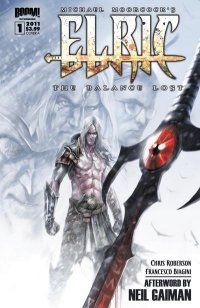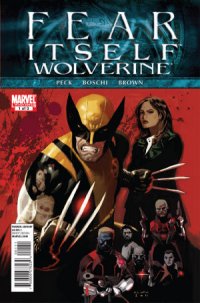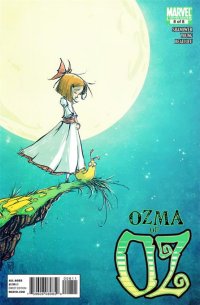Red Skull: Incarnate #1, Marvel, $2.99
By Adam Prosser
The Nazis, like any cartoonish supervillains, had an origin story of their own. Arising from the desperate poverty and political instability of the 1920s, the National Socialists gained popularity by appealing to an imagined glorious past and by finding easy, convenient scapegoats for their then-current woes. They scuffled with other parties, most notably the Communists, and were often targeted by the police, but their popular support eventually made them too powerful and…well, you know the rest.
The cleverest bit of Red Skull: Incarnate is how it parallels the formative years of Johann Schmidt, the future Red Skull, with the rise of the Nazi regime itself. The seeds were already there in Stan Lee and Jack Kirby’s origin story, with Schmidt as a struggling, impoverished orphan who cared only for himself until a chance meeting with the Fuhrer gave him the opportunity to become something greater than he could have dreamed. Here, writer Greg Pak fleshes out those early years, depicting Schmidt’s upbringing in a Dickensian orphanage, his earliest lessons in the cruelty of the world, and his earliest run-in with the Nazis. (Though I miss Lee and Kirby’s technique of never showing Schmidt’s face until he puts on the mask.) Schmidt, of course, isn’t an ideologue but an opportunist, and in one of those tragic ironies that often drive Marvel characters, his first reaction is to want to learn how to kill Nazis, rather than joining them. But inadvertently, fate demonstrates the inherent injustice of the universe, and teaches Schmidt to side with power. While most of the story is still to come, the conclusion seems tragically inevitable.
This book is a de facto sequel to Magneto: Testament, by the same author, which also chronicles how the events of WWII forged one of the Marvel Universe’s great supervillains into the monster he became. I’m always a bit uncertain about books like this; I don’t pick up a superhero comic to see an in-depth character study or a realistic historical snapshot, and spending 22 pages on a Very Serious Story devoid of killer robots and shield-throwing seems to come perilously close to the kind of self-importance that I think is hurting superhero comics. Again, too, we do know the basic outlines of this story already. But there’s no denying that Pak tells this story very well, with enough research put into the historical detail and the character of Schmidt being well-drawn enough that it doesn’t just seem like grim ‘n’ gritty wankery.
Still, dwelling too much on real-life horror—the kind superheroes are powerless against—is something that ultimately doesn’t benefit a superhero comic. Here’s hoping that the Nazi robots make their appearance in this series sooner rather than later.
Rating: 




Out of a Possible 5 Stars
 Elric: The Balance Lost #1, BOOM!, $3.99
Elric: The Balance Lost #1, BOOM!, $3.99
by Adam Prosser
The saga of Elric of Melnibone—and the work of Michael Moorcock in general—is one of those geek culture touchstones that I know only through osmosis. In fact, I think I know him better from the extremely funny parody version, Elrod of Melvinbone, who popped up occasionally in Cerebus, then from anywhere else. I knew he was an albino warrior with a soul-drinking black sword (whatever that meant) and the last emperor of a dying race. And I knew he was one iteration of “the Eternal champion”, who recurred throughout the universe (or, as it turns out, multiverse) Moorcock has created. But that’s about it. So while a comic book adaptation of Elric may not be the best place to jump in, I thought it would be a sure-fire test of how successful the series would be if I could follow it!
As it turns out, the comic is very dense, involving not just Elric but several other “Eternal Champions”, as mentioned above. The real protagonist (seriously, Elric himself is in like seven pages of this thing) is Eric Beck, who appears to be Elric’s doppelganger here on our Earth. Like Ric, he’s a thin, sickly albino, and he too appears to share multiple personalities spread across many worlds that he recalls only in dreams. These include Elric, the retired Duke Dorian Hawkmoon, and the one-eyed, time-displaced Corum Irsei. When awake, Eric works as a game developer who watches with some unease as his estranged twin brother Garrison rallies a following under of the banner of the increasingly fascist “Law Party” (I’m not sure if writer Chris Roberson intends a heavy-handed Tea Party analogue, or if that’s just my own flaming liberal sensibilities drawing the parallel…) This all has something to do with a coming clash between Order and Chaos, in which, interestingly, neither side seems to be inherently good or evil—what’s apparently important is keeping the balance between the two.
Like I said, it’s a lot to follow for a new reader, but as it turns out, I like my beer cold, my TV loud, my comics dense and my worlds intricate. Not all the characters are of equal interest (Dorian Hawkmoon doesn’t do much here beside exposit, and Elric mostly just hacks away at monsters) but the mythology is clearly rich and intriguing. A couple months ago I reviewed “Sigil” a book with a similar premise of a hero able to skip between multiverses, but which took such pains to ease the viewer into the story that it came off as rather generic. That’s certainly not the case here, with a whole raft of intriguing concepts and imagery. I guess the best compliment I can give this comic is that, far from scaring me off, it makes me want to go back and read Moorcock’s work.
Rating: 




Out of a Possible 5 Stars
Fear Itself: Wolverine #1 of 3 (Marvel, $2.99)
By Jeb D.
Here’s the dilemma: do readers of big comic book crossover events (and sneer as we might, they seem to represent what remains of superhero comics’ core constituency) want to be “forced” to buy ancillary tie-in titles by having the main story incomprehensible without them? Or do they want loosely-linked tie ins that have little to do with the overall storyline, but which may then be skipped without losing the main plot threads (and, obviously, at some cost savings)?
What you’d really like is some sort of happy medium (which Marvel occasionally manages; the tie-ins for Dark Reign actually were a good blend of those elements, while the ones for House of M were generally more interesting than the main series). Such is not provided here.
Every great comics writer started out as someone I’ve never heard of, but I can’t shake the notion that putting untested talent on these spinoffs makes them seem even more of a cash-grab than they would if one of Marvel’s core group of writers or artists were producing them (though I suppose one could counter that this way, no one “has” to buy the series just to follow a favorite creator). It’s way too early to tell what kind of future Seth Peck has in comics writing, but this reads like the work of a tyro, motivated not by the excitement of bringing something new and exciting to comics, but one who is attempting to hone his craft by careful execution of tried and true formula.
On the periphery of the Fear Itself meshugass, some renegade agents of STRIKE (Alan Moore’s beloved British version of SHIELD) have got hold of a helicarrier that Norman Osborne commissioned (but he was already in the clink when it was delivered). And they’re going to raise some hell with it. Wolverine’s on the case because… well, because he’s the hero of this particular title, but it could just as easily have been anyone else: there’s no unique link back to him or the X-Men (so far, anyway). Logan (or James or whoever the fuck he is these days) gets tough, gets captured, and has two more issues to bust out and savage these dudes (sorry, blokes–they are British, after all, as Peck never fails to remind us by repeatedly throwing the word “mate” into their conversation). The action scenes are pretty basic stuff, and the dialog feels as though it was written by someone who never quite got the 70’s out of their system (or one who’s been reading Turf), as the pages are crammed with word balloons filled with exposition and redundant dialog, making this an extremely talky piece of work. Nothing wrong with a comic emphasizing story over smash, of course, but it helps to have something that feels less by-the-numbers than this particular tale.
Artist Roland Bosche brings his usual tough-guy approach (Ghost Rider, Punisher MAX), with a nice range of facial expressions and a few imaginative paneling choices to liven things up a bit.
On the one hand, I can’t really recommend buying this comic: with Jason Aaron (just to name one) in the house, there’s far better Wolverine stuff out there today. On the other hand, I guess I owe Marvel a sort of backhanded compliment: they’ve made it possible for you to enjoy Fear Itself (if that’s your goal) without needing to plunk down three bucks for this thing.
Rating: 




Out of a Possible 5 Stars
 Ozma of Oz #8 of 8 (Marvel, $3.99)
Ozma of Oz #8 of 8 (Marvel, $3.99)
By Jeb D.
Eric Shanower and Skottie Young’s latest adaptation of L. Frank Baum wraps up, and after three series and counting, the inspiration shows no sign of flagging.
Of course, most of the inspiration– Billina the chicken, Tik-tok the clockwork man, giant wheezing robots, the Nome King, and Ozma herself, along with Dorothy and the usual gang–comes from Baum. If I have one teensy tiny reservation about this series of comic adaptations it’s that Shanower is so faithful to Baum that you sort of wonder if someone else mightn’t be able to take this one, and let him get back to Age of Bronze, dammit! But Oz has been the man’s obsession for years, and I can’t fault the results: he keeps enough of the original dialogue to retain its wonderfully loopy flavor, without ever allowing it to feel arch or musty. He’s judicious enough with his editing to make it all look easier than I’m sure it is.
The real magic, of course, comes by way of Young’s terrific visualization of Oz and its denizens. At this remove, it would seem impossible for someone to ignore the familiar iconography that decades of accretion weigh down on these stories, but Young manages it. He isn’t attempting anything “modern,” but is rather harking back to a vision that would have suited these books in the years shortly after their original release; they don’t look like the original illustrations, but they look like the work of someone who understands the power and magic of his source material… because that is clearly what they are. Combine vintage visual inspiration with the dynamism of modern comic storytelling and you get what is IMHO the most consistently strong and rewarding adaptation of outside material that Marvel has ever produced.
Four stars for this issue, and what the heck– five, in advance, for the September release of the hardcover collection.
Rating: 




Out of a Possible 5 Stars